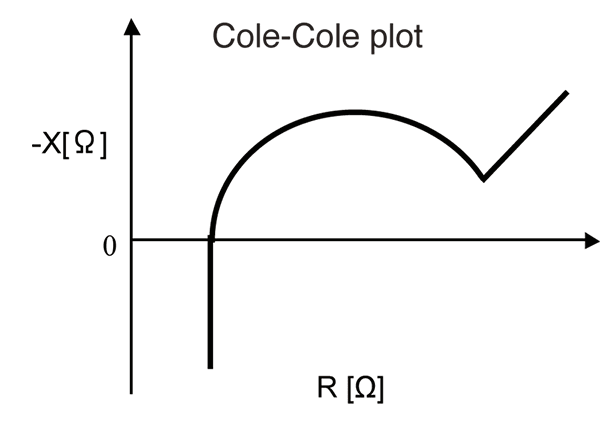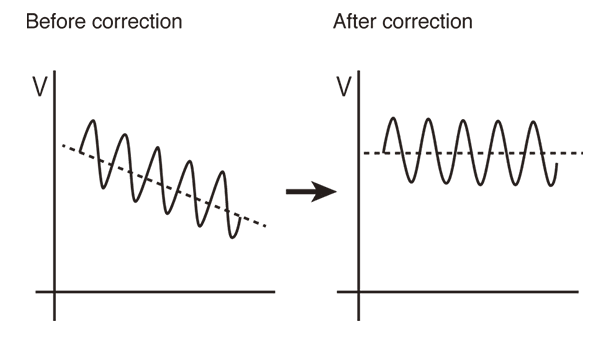How to measure a battery’s internal resistance with a battery tester and other measurement applications
What are the principles of battery internal resistance testing?
Internal resistance, battery voltage values, and appropriate battery testers by battery type
The figure illustrates Hioki’s line of battery tester models that measure batteries’ internal resistance (IR) and voltage (open circuit voltage, or OCV) as well as which types of battery each instrument can be used to measure. The Hioki BT4560 and 3561 are well suited for testing battery cells designed for electric vehicles (EVs) and hybrid electric vehicles (HEVs) as well as with lithium-ion rechargeable batteries used in compact battery packs for mobile devices due to the low internal resistance of these types of cells. By contrast, the BT3562 and BT3563 should be used with battery packs (sets of multiple lithium-ion rechargeable batteries) due to the high battery voltage (OCV) of such configurations. Although the instruments can also be used to measure internal resistance and battery voltage for other rechargeable batteries such as nickel-metal-hydride, lead acid, and nickel-cadmium batteries, you should choose a battery tester on the basis of the battery voltage (OCV).
How to measure the internal voltage of a battery pack (also known as an assembled battery, battery stack, or battery module)
To obtain the required voltage, a battery is constructed by connecting multiple cells in series. To create such a battery pack (also known as an assembled battery, battery stack, or battery module), tabs or busbars are welded in place to connect the cells. The resulting weld resistance is included in measurements of the battery pack’s internal resistance. Since weld anomalies will prevent the battery pack from delivering its full level of performance, it is recommended to test assembled battery packs using a battery tester. The Hioki BT3562 can measure the internal resistance of battery packs of up to 60 V, while the BT3563 can measure the internal resistance of battery packs of up to 300 V.
How to measure a battery’s Cole-Cole plot
Broadly speaking, a battery’s internal resistance consists of three components: ohmic resistance (weld resistance), reaction resistance (charge transfer resistance), and diffusional resistance (Warburg impedance). These components are generally calculated by means of Cole-Cole plot (Nyquist plot) measurement. The Hioki Battery Impedance Tester BT4560, which allows the measurement frequency to be varied within the range of 100 mHz to 1.05 kHz, is ideal for Cole-Cole plot measurement. The instrument can measure a battery’s effective resistance R and its reactance X. It also ships with standard application software that can render Cole-Cole plots. In addition, LabVIEW can perform equivalent circuit analysis for simple batteries.
How to measure the ESR of electric double-layer capacitors (EDLCs)
The internal resistance of electric double-layer capacitors (EDLCs) that belong to Class 1 and are used in backup applications is measured using an AC signal. Hioki battery testers can also be used for simple measurement of Class 2, Class 3, and Class 4 capacitors. The Hioki BT3562 can measure ESR of up to 3.1 kΩ at a frequency of 1 kHz. JIS C5160-1 defines the measurement current for such applications, and the LCR Meter IM3523 can be used in applications where the measurement current must conform to the JIS standard. With the BT3562, the measurement current is fixed for each measurement range.
How to measure the ESR of a lithium-ion capacitor (LIC)
As a result of a phenomenon known as transient recovery voltage, the potential of a lithium-ion capacitor (LIC) or electric double-layer capacitor (EDLC) does not stabilize immediately after the component charges or discharges. If the capacitor’s ESR is measured under those conditions, measured values may fail to stabilize due to the effects of the transient recovery voltage. The Hioki Battery Impedance Meter BT4560’s potential gradient correction function can be used to cancel out the effects of transient recovery voltage, making stable ESR measurement possible. The instrument has a maximum resolution of 0.1 μΩ, and it can measure lithium-ion capacitors and electric double-layer capacitors with low ESR values of 1 mΩ or less.







